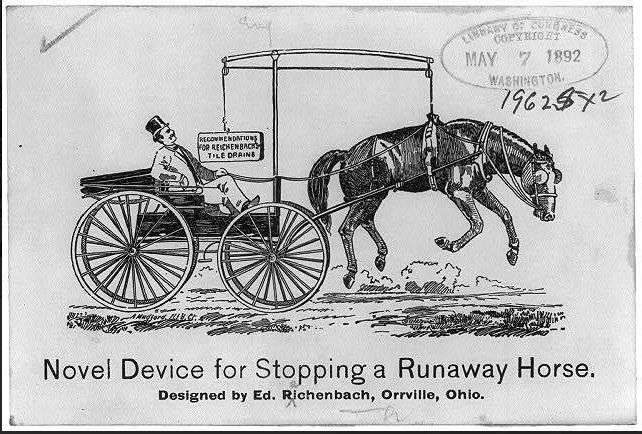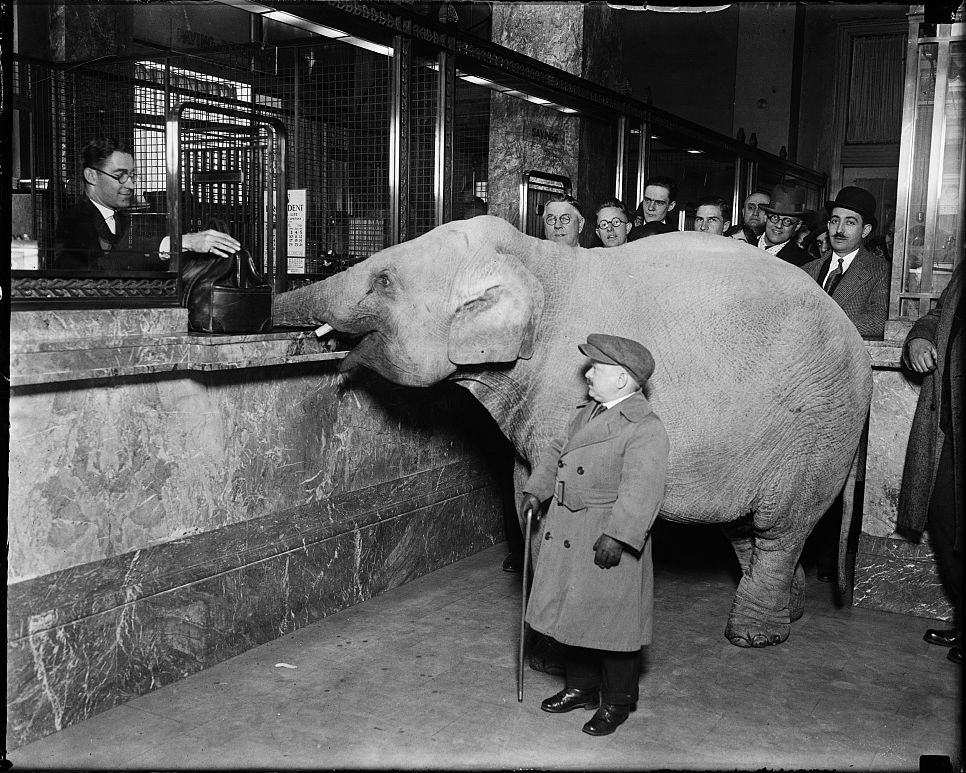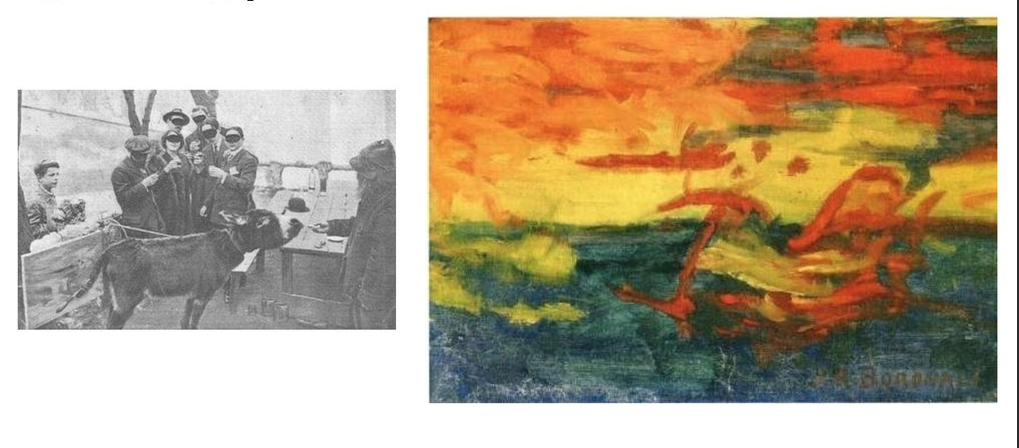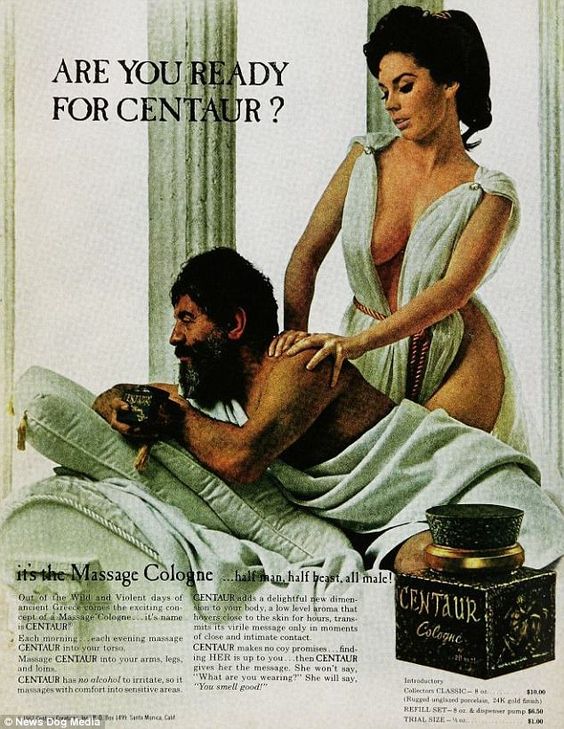Animals
The CB Bears
What fad of our current era will date as badly as CB radio?The Wikipedia page.
Posted By: Paul - Thu Jun 11, 2020 -
Comments (2)
Category: Animals, Fads, Humor, Parody, Ineptness, Crudity, Talentlessness, Kitsch, and Bad Art, Cartoons, 1970s
Novel Device for Stopping a Runaway Horse

If you read the words on the "counterweight," they say, "Recommendations for Reichenbach's Tile Drains." So this is a humorous advertisement rather than an actual patent. But I would not be surprised if someone somewhere had come up with such an idea.
Source.
Posted By: Paul - Sun Jun 07, 2020 -
Comments (2)
Category: Animals, Business, Advertising, Humor, Nineteenth Century
The Twilight People
Wikipedia page.
Posted By: Paul - Tue Jun 02, 2020 -
Comments (1)
Category: Animals, Antisocial Activities, Cryptozoology, Ineptness, Crudity, Talentlessness, Kitsch, and Bad Art, Mad Scientists, Evil Geniuses, Insane Villains, Movies, 1970s, Asia
Partisan Boxers
Just in time for the 2020 election, from the legendary Frederick's Of Hollywood.
Ad source.
Posted By: Paul - Fri May 29, 2020 -
Comments (5)
Category: Animals, Politics, Underwear, 1950s
Guard Pig
We recently posted about tarantulas used to guard jewelry. Another unconventional security animal was CP, the guard pig, trained to attack by animal trainer Marcel Leblanc:Leblanc said he bought CP—which stands for Canadian Pig—"to fatten up and slaughter for a friend's party."
But he said he noticed the 150-pound, 6-month-old, pink and white Yorkshire pig learned tricks quickly. So he placed the animal among the Doberman pinschers and German shepherds in a police canine training program.
"The pig performed better than the dogs," said Leblanc.
If a 150-pound pig was charging at me, I'd sure run away!

Orlando Sentinel - Sep 23, 1979

El Paso Times - Oct 10, 1979


Fort Worth Star Telegram - Oct 10, 1979
Posted By: Alex - Thu May 28, 2020 -
Comments (7)
Category: Animals, Crime, 1970s
“I have a trunkful of money to deposit”

Charlie Becker, midget trainer with Singer's Midgets, walked the smallest elephant of his troupe to Merchant's Bank, and made a deposit for Keith's Theatre. The elephant delivered the money satchel directly to the receiving teller
Source.
Posted By: Paul - Tue May 19, 2020 -
Comments (1)
Category: Animals, Money, 1920s
The Painter Joachim Raphaël Boronali
NOTW and Weird Universe have covered innumerable art world hoaxes and farces. Paintings hung upside down, installations destroyed by janitors, large prize money for unmade beds, and so forth. Here is one of the first such japes. A painting done by a donkey with a brush tied to its tail, and exhibited at a famous Paris salon as the work of a new painter named Joachim Raphaël Boronali.
Read the whole story here.
Posted By: Paul - Thu May 14, 2020 -
Comments (3)
Category: Animals, Art, Avant Garde, Hoaxes and Imposters and Imitators, Twentieth Century
One Brave Dog

Source.
Posted By: Paul - Wed May 06, 2020 -
Comments (0)
Category: Animals, Parents, Dogs, Courage, Bravery, Heroism and Valor
Follies of the Madmen #475

Makes you smell like half a horse.
Source. (Featuring more similar ads.)
Posted By: Paul - Sun May 03, 2020 -
Comments (2)
Category: Animals, Advertising, 1960s, Fictional Monsters, Perfume and Cologne and Other Scents
Veggie Cannibalism
We all know of the "animal cannibal" motif in ads. A chicken or cow or pig dressed as a chef invites the viewer to snack on his relatives. But I have never seen veggie cannibalism till this ad.Can WU-vies find other examples?

Posted By: Paul - Wed Apr 15, 2020 -
Comments (1)
Category: Animals, Business, Advertising, Cannibalism, Vegetables

| Who We Are |
|---|
| Alex Boese Alex is the creator and curator of the Museum of Hoaxes. He's also the author of various weird, non-fiction, science-themed books such as Elephants on Acid and Psychedelic Apes. Paul Di Filippo Paul has been paid to put weird ideas into fictional form for over thirty years, in his career as a noted science fiction writer. He has recently begun blogging on many curious topics with three fellow writers at The Inferior 4+1. Contact Us |




